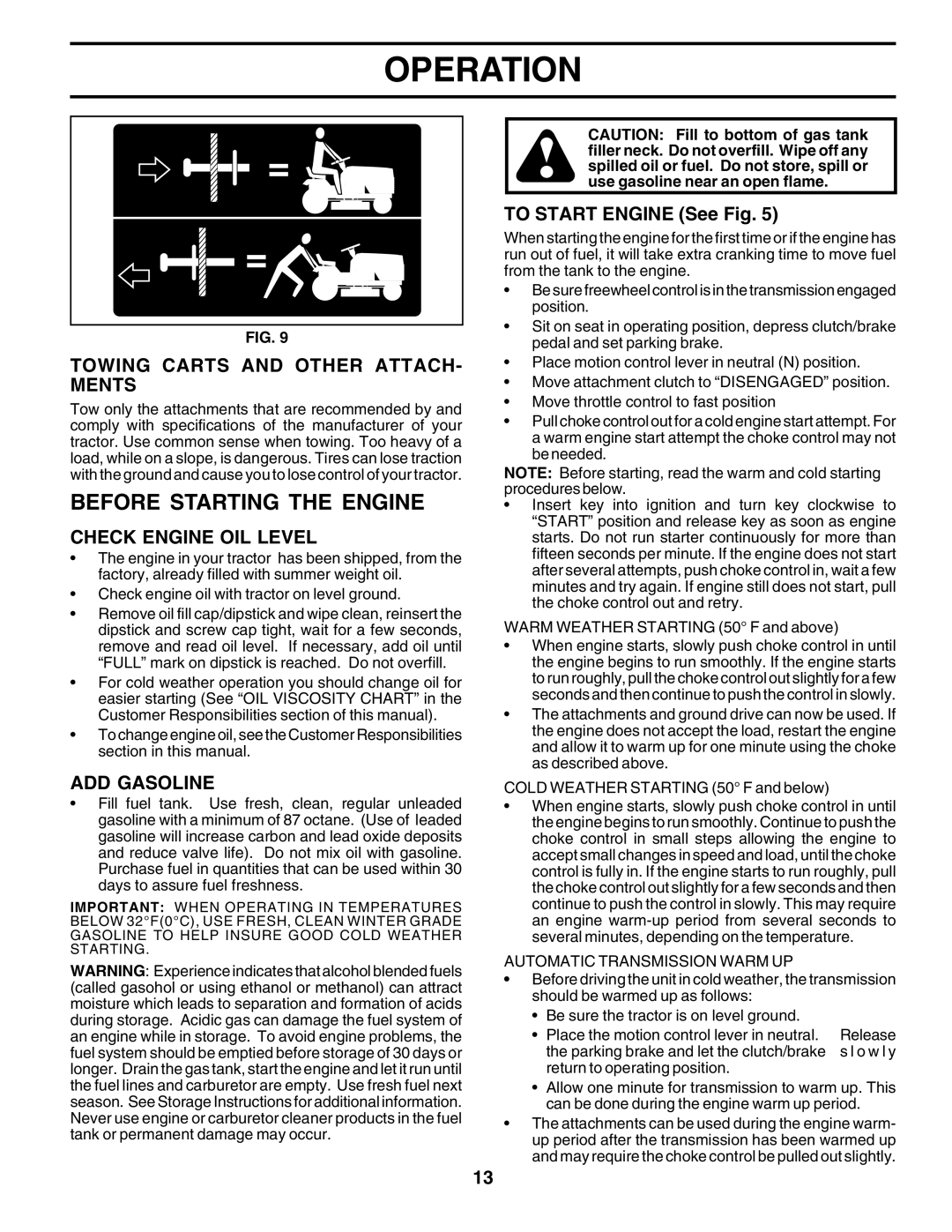180002 specifications
The Poulan 180002 is a chainsaw that stands out in the realm of outdoor power equipment, particularly favored by both enthusiasts and professionals for its robust performance and innovative features. Engineered to tackle a variety of cutting tasks, this model blends power, efficiency, and user comfort into a reliable tool for both seasoned loggers and home users alike.One of the key attributes of the Poulan 180002 is its powerful engine. Equipped with a 18-inch bar and a reliable gas engine, the chainsaw delivers an impressive level of torque, making it capable of felling trees, trimming branches, and performing other heavy-duty cutting tasks with ease. The efficient engine design ensures that it operates smoothly, allowing for long operational periods without overheating or performance dips.
The Poulan 180002 incorporates advanced technology features that enhance its usability in various environments. One notable feature is its Easy Start system, which reduces the amount of effort needed to start the chainsaw. This is especially useful for users who may experience difficulty starting traditional pull-start engines. Additionally, the chainsaw includes a tool-less chain tensioning system, allowing users to adjust the chain quickly and easily without the need for extra tools. This convenience feature ensures that the chain remains properly tensioned for optimal performance.
Safety is a paramount concern in chainsaw operation, and the Poulan 180002 addresses this with several built-in safety features. It includes a chain brake mechanism that stops the chain quickly in the event of kickback, helping to protect the user from accidents. Additionally, the chainsaw is equipped with a front hand guard to provide extra protection during operations.
In terms of design, the Poulan 180002 is ergonomically crafted for user comfort. The handle is designed to provide a secure grip, reducing vibration and fatigue during extended use. The lightweight construction further contributes to its ease of handling, making it an ideal choice for both professional and casual users.
Overall, the Poulan 180002 combines power, innovative technology, and user-friendly features, making it a versatile and dependable chainsaw. Whether you’re tackling tough trees or handling routine yard work, this chainsaw is engineered to meet a wide range of cutting needs with precision and reliability. With its compelling mix of performance and convenience, the Poulan 180002 makes an excellent addition to any outdoor toolkit.

